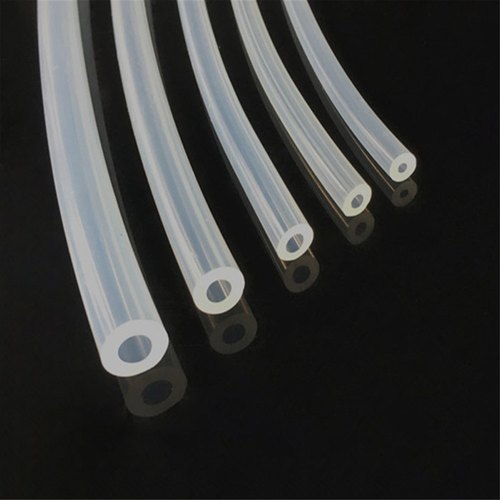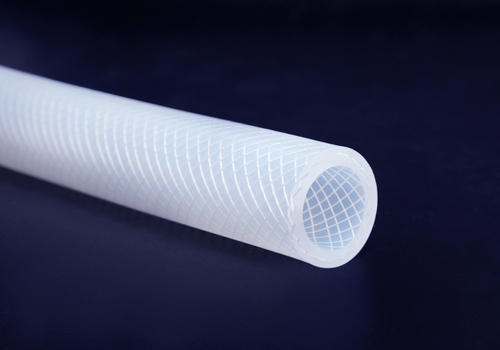Silicone tubing are widely used in the Medical and Food Industry due to certain properties.
Fluid management and drainage, as well as anaesthesia and respiratory equipment, IVs, catheters, peristaltic pumps, and biopharmaceutical laboratory equipment, all require healthcare tubing. It is critical that the materials used fulfil the highest standards of quality.
Silicone elastomers are the preferred material for healthcare tubing and other extruded profiles that must meet medical device regulatory requirements. When silicone rubber is transformed into cured silicone tubing or extruded profiles, it no longer includes any plasticizers that can leak or be removed, nor does it retain any curing reaction by-products.
It is not necessary to use a post-cure process, however it is highly advised to maintain physical dimensions and mechanical qualities.
In extrusion applications, silicone elastomers outperform traditional thermoplastics including polyvinyl chloride (PVC), polyethylene (PE), polyurethane (PU), ethylene vinyl acetate (EVA), and poly-isoprene, giving total value in processing and performance.
A comparison of silicone, PTE, and PVC is that Silicone elastomers are dimensionally stable, and their inherent strength and flexibility allow them to maintain very thin-wall tubing profiles. They can also be extruded as solid profiles with substantial cross sections.
CHARACTERISTICS OF THE MATERIAL
Silicone elastomers come in a variety of durometer ranges and provide great heat resistance and chemical resistance. Many environmental conditions, such as temperature, chemicals, UV radiation, and x-rays, are resistant to silicone elastomer tubing. The fact that they resist sticking to biological tissue and do not stimulate microbial growth contributes to their usage in medical applications.
Sterilization of silicone elastomer tubing can be done in a variety of ways with no loss of performance or changes in mechanical qualities. This reflects silicone’s molecular stability. Silicone rubber is usually sanitised by steam after it has been formed into a completed item.
The silicone-oxygen (Si-O) bond is one of the unique characteristics of silicone elastomers. Silicone’s energy and molecular stability are the most important factors in biodurability, or the ability to have skin contact while resisting biological fluids. Without additives, silicone’s multiple hardness possibilities remain flexible, which is critical for biocompatibility.
Due to the suitable refractive indices of the filler and polymer utilised, silicone has a high amount of translucency by nature, and it exhibits distinct colorability. Different colour possibilities are available; nevertheless, silicone elastomers can be quite transparent for fluid and flow observation.
Types of Silicone Tubing
- General Purpose Silicone Tube
- Medical / Food grade Tubes
- Silicone Braided Hose


